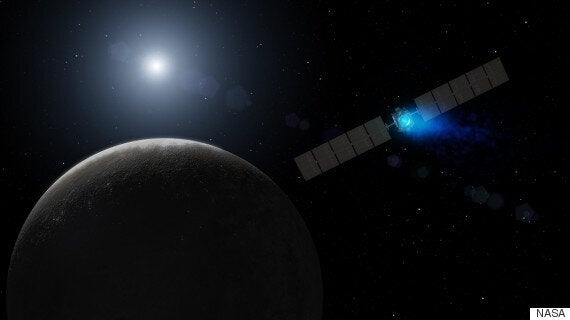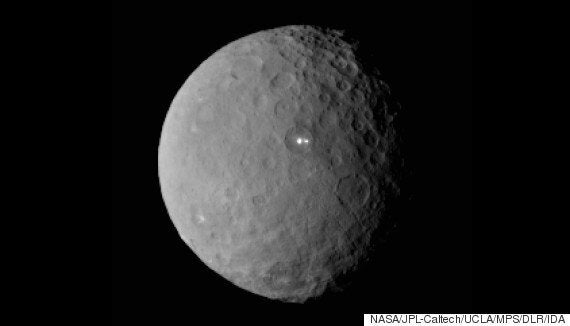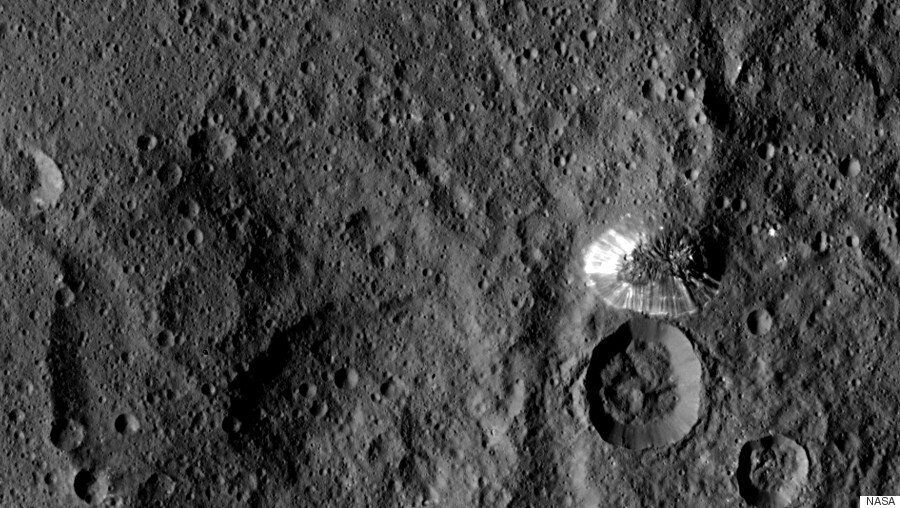As NASA's Dawn probe moves in closer to the dwarf planet Ceres it's as though a giant veil of fog is being lifted from the lens.
With the veil now safely lifted, NASA's scientists have been given their first -- and clearest -- glimpse of Ceres' 'Lonely Mountain', a giant conical mountain that stretches over 4 miles in height and features some very bizarre characteristics.
With an almost perfectly smooth, braided surface scientists are hoping to get a closer inspection of not just the mountain but Ceres' crater-potted surface.

Dawn was launched in 2007 on a mission to explore the protoplanets Vesta and Ceres.
At an altitude of just over 900 mils, Ceres takes 11 days to fully map the planet's surface. Over the next two months Dawn will use its framing camera to create a 3D model of the dwarf planet's entire surface.
From this distance each pixel covers an area of around 140m however NASA will be able to get an even closer view as Dawn begins its decent to an eye-watering orbit of just over 200 miles.
Ceres has proven to be something of a mystery for NASA. Located just past Mars and within the asteroid belt, the dwarf planet first had NASA and the public intrigued when initial pictures seemed to reveal a mysterious 'bright spot' on its surface.

Ceres' mysterious bright spots were first pictured from thousands of miles away.
Andreas Nathues, lead investigator for the framing camera team said, "The brightest spot continues to be too small to resolve with our camera, but despite its size it is brighter than anything else on Ceres. This is truly unexpected and still a mystery to us."
It has been speculated that the lights might be reflections from ice, or maybe evidence of volcanic activity. UFO hunters think it means Ceres is the Death Star.
READ MORE:
Long range photos had revealed a single light, however it now appears that up close they are two very distinct lights, reflecting 40 per cent of the light that's sent their way.
What's astonishing is that these 'closer' images were actually taken 29,000 miles away. Dawn is using a revolutionary ion propulsion system to reach the planet where on 6 March the spacecraft will move into orbit.
